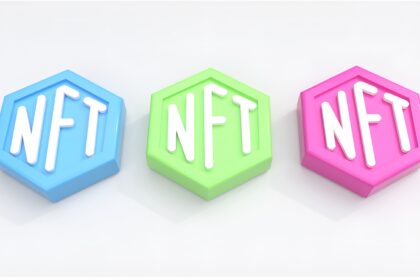Maximal extractable value refers to the highest amount of profit that can be gained by reordering, including, or excluding transactions within a blockchain block. This practice often involves miners or validators running specialized algorithms to identify and capitalize on arbitrage opportunities hidden in pending transactions. By manipulating transaction order, they can capture additional gains beyond standard block rewards and fees.
For example, a miner might spot a decentralized exchange trade pending in the mempool and insert their own transaction just before it, profiting from price differences created by the original trade. This process of detecting and exploiting such profitable patterns is central to maximizing returns on mining operations.
The pursuit of this extracted gain has led to the development of complex strategies where participants monitor network activity closely, leveraging bots and automation tools. Understanding how these mechanisms work helps clarify why certain blocks contain specific transaction orders and highlights potential risks for users unaware of front-running or sandwich attacks.
What Is MEV: Maximal Extractable Value
The concept of extracting additional gains beyond standard transaction fees is central to understanding blockchain efficiency and fairness. This additional gain, often pursued by miners or validators, arises from reordering, including, or excluding transactions within a block. The process involves identifying profitable opportunities such as arbitrage between decentralized exchanges or liquidations in lending protocols, which can generate significant running returns for those who successfully capture them.
Transaction ordering plays a pivotal role here; the ability to control which transactions are processed first allows participants to capitalize on price discrepancies or execute backrunning strategies. Running refers to placing a transaction immediately after another specific one to benefit from its effects. This practice highlights how subtle manipulations of transaction sequencing can influence profits in on-chain environments.
Technical Mechanics Behind Transaction Manipulation
Miners and validators engage in sophisticated algorithms that scan pending transactions for lucrative opportunities. They employ bots designed to detect arbitrage situations–where the price of an asset differs across multiple platforms–and insert their own trades at optimal positions. This extraction method requires deep technical knowledge of mempool dynamics and timing precision.
For example, a miner might spot a trade buying a token cheaply on one exchange but selling it higher on another. By prioritizing their own transactions ahead of others, they secure risk-free profits through swift asset swaps. Such actions demonstrate how mining strategies extend beyond block creation into active value capture embedded within the transaction pool itself.
Economic Impacts and Network Considerations
This form of value capture influences network behavior by encouraging competition among miners or validators to optimize block composition aggressively. While it increases potential rewards for these actors, it can also lead to adverse effects like higher gas fees and reduced fairness for regular users whose transactions may be delayed or reordered unfavorably.
Studies have shown that intense competition for these gains can cause spikes in transaction costs during high activity periods as participants bid more aggressively to prioritize their operations. Understanding these dynamics is critical for developers designing mechanisms aimed at mitigating negative externalities while preserving incentives aligned with network security and decentralization.
Mitigation Strategies and Future Developments
Several protocol-level solutions are under exploration to reduce exploitative behaviors related to transaction sequencing manipulation. Concepts such as fair ordering services, encrypted mempools, and commit-and-reveal schemes aim to obscure transactional details until inclusion in a block, limiting front-running possibilities.
- Fair Ordering Services: These enforce rules ensuring transactions are processed roughly in the order received rather than reordered based on profitability.
- Encrypted Mempools: Transactions remain concealed until finalized, reducing visibility that bots rely on for arbitrage detection.
- Commit-and-Reveal Schemes: Participants submit commitments first, revealing contents later to prevent premature exploitation.
Adoption of such techniques could rebalance incentives toward equitable participation while maintaining efficient market functioning within blockchain ecosystems.
Practical Example: Arbitrage Between Decentralized Exchanges
A trader notices that Token X trades at $1.00 on Exchange A but $1.05 on Exchange B simultaneously. By submitting coordinated buy orders on Exchange A followed immediately by sell orders on Exchange B within the same block, they realize profit margins without exposure to market risk. Miners aware of this opportunity might reorder these transactions favorably or insert their own counterparties ahead–demonstrating direct application of extraction tactics in live scenarios.
Conclusion: Navigating Transaction-Level Profit Opportunities
Recognition of these additional profit streams has led to an evolving interplay between miners’ incentive structures and user experience quality across networks. Balancing extractive opportunities with transparency and fairness remains an ongoing challenge requiring continued innovation in protocol design and community governance frameworks.
Learners engaging with this topic should focus initially on understanding mempool mechanics and transaction lifecycle before exploring advanced mitigation methods widely discussed among blockchain researchers today.
How MEV Impacts Transactions
Understanding the influence of maximal extractable profit on blockchain transactions requires examining how it reshapes the ordering and inclusion of operations within blocks. This phenomenon enables miners or validators to reorder, insert, or censor transactions to capitalize on specific opportunities, such as arbitrage between decentralized exchanges or front-running large trades. These actions directly affect transaction outcomes, costs, and overall network fairness.
One clear example is arbitrage exploitation, where participants detect price differences across liquidity pools and execute trades accordingly. Those who control block production can prioritize their own arbitrage transactions ahead of others by reordering pending operations. This often results in increased fees for regular users whose transactions are delayed or reordered unfavorably.
Transaction Reordering and Front-Running Dynamics
The process of front-running involves observing a pending transaction and placing a new one with higher priority to capitalize on expected price movements. Block producers leverage this tactic by inserting their own transactions before others to gain profit. This manipulation affects the original transaction’s execution price and timing, potentially causing slippage or even failure.
A practical case study involves large token swaps on decentralized exchanges like Uniswap. When a sizable trade is detected in the mempool, actors exploiting MEV insert buy or sell orders immediately before this trade to benefit from predictable price changes. Consequently, ordinary traders face higher costs due to increased gas fees and less favorable execution prices.
- Impact on Gas Fees: Competing for profitable reorderings drives up gas prices as participants outbid each other.
- Increased Transaction Latency: Non-prioritized transactions experience delays as miners optimize block content for maximal gain.
- Censorship Risks: Certain transactions may be excluded if they conflict with lucrative reorderings.
This competitive environment incentivizes miners/validators to maximize their revenue streams beyond simple block rewards, which alters transaction dynamics significantly. Users must consider these factors when submitting time-sensitive operations or interacting with liquidity pools vulnerable to such strategies.
Emerging solutions such as fair ordering protocols and private transaction pools attempt to mitigate adverse effects by reducing visibility into pending operations or enforcing more equitable sequencing rules. However, widespread adoption remains limited due to complexity and scalability concerns. Understanding these technical intricacies empowers users and developers alike to design interactions that minimize exposure to front-running and ensure smoother transactional experiences within decentralized ecosystems.
Techniques for MEV Extraction
One common method for capturing additional returns during block production involves running custom transaction ordering strategies within mining or validation software. By controlling the sequence of transactions, miners can prioritize those that increase their profit beyond standard block rewards and fees. This approach often targets opportunities in decentralized finance protocols where timing and placement of trades directly influence gains.
Arbitrage plays a pivotal role in this process. Traders monitor on-chain liquidity pools to spot price differences for identical assets across multiple platforms. When these discrepancies exist, executing buy and sell orders in quick succession yields profits. Miners or validators who include such transactions ahead of others effectively extract surplus earnings by leveraging transaction sequencing control.
Advanced Strategies and Practical Examples
Another technique involves sandwich attacks, where an operator inserts transactions immediately before and after a victim’s trade to capitalize on expected price movements caused by that trade. For instance, if a large purchase is detected, placing a buy order just before inflates the asset price, followed by selling right after at this elevated level. This method requires precise transaction monitoring and rapid inclusion capabilities.
Flashbots represent a notable infrastructure designed to facilitate fairer access to these opportunities by providing transparent bundles of transactions directly to miners. This mechanism reduces network congestion while allowing participants to propose complex transaction sets that maximize potential returns without causing adverse side effects like front-running by unrelated users.
Risks of MEV to Users
Users engaging with blockchain networks should be aware that the practice of extracting additional transaction profits can lead to increased costs and unpredictable outcomes. One primary risk involves front-running, where miners or validators reorder pending transactions to prioritize their own trades, often causing users to pay higher fees or receive less favorable execution prices. This manipulation reduces the fairness of decentralized systems and may degrade user experience.
Another significant concern is arbitrage strategies executed by entities running mining operations or block producers who identify profitable opportunities within blocks. While arbitrage can enhance market efficiency, aggressive tactics can delay or exclude user transactions, resulting in failed trades or unexpected slippage. Such behavior creates uncertainty around transaction confirmation times and finality for everyday participants.
Technical Risks and Network Implications
The extraction process relies heavily on sophisticated algorithms embedded within mining software, enabling operators to detect lucrative transaction sequences before others. This capability introduces risks such as sandwich attacks, where a user’s transaction is placed between two malicious trades aiming to capture profit from price movements caused by the user’s action. Consequently, users might lose more funds than initially anticipated due to these layered attacks.
Additionally, the running of specialized bots for value extraction increases network congestion during peak periods. As miners compete to prioritize their profitable transactions, gas fees surge dramatically, pricing out smaller users or making routine interactions prohibitively expensive. This dynamic undermines the accessibility goals of public blockchains and favors entities with extensive computational resources.
- Increased transaction costs: Elevated bidding wars for block space inflate fees beyond standard levels.
- Transaction censorship: Selective inclusion or exclusion of user transactions based on profitability considerations.
- Unpredictable execution order: Reordering by extractors leads to non-intuitive outcomes impacting DeFi protocols and user strategies.
From a practical perspective, users can observe these effects in decentralized finance when expected swap rates diverge significantly due to ongoing arbitrage activity within the same block. For example, a trader submitting a swap might find their trade sandwiched by two opposing orders that front-run and back-run their position, extracting surplus revenue at the trader’s expense while maintaining network consensus rules.
To mitigate these risks, emerging solutions like fair ordering protocols and private transaction pools aim to reduce exploitative behaviors by obscuring pending transactions from miners until they are finalized. However, adoption remains limited and challenges persist balancing transparency with protection against extractive practices. Users should monitor evolving tools designed specifically to minimize adverse impacts associated with competitive profit-seeking in mining environments.
Conclusion: Practical Approaches to Reducing Extraction Risks in Mining
To limit the profits gained from transaction reordering and front-running during block production, implementing transparent auction mechanisms such as sealed-bid or batch auctions proves effective. These approaches restrict miners’ ability to selectively include transactions for arbitrage, thereby decreasing unfair gains without compromising network throughput.
Running protocols that randomize block ordering or utilize fair sequencing services can further diminish opportunities for value capture by validators. For instance, solutions like Fair Ordering Service (FOS) or threshold encryption delay reveal of transaction contents until commitment enhances fairness in mining operations.
Broader Implications and Future Directions
The ongoing arms race between searchers exploiting miner privileges and protocol designers refining defenses suggests a need for layered mitigation strategies combining cryptographic tools, economic incentives, and governance improvements. As blockchains evolve, integrating MEV-resistant architectures alongside improved mempool privacy will become increasingly important to sustain trust and equitable participation.
- Arbitrage reduction: Incorporating cross-chain transaction finality standards reduces extractive opportunities created by fragmented liquidity pools.
- Incentive alignment: Rewarding validators for adherence to fair ordering protocols discourages manipulative behaviors during block assembly.
- Mempool confidentiality: Encrypting pending transactions prevents frontrunners from identifying profitable trades before inclusion.
Looking forward, research into decentralized sequencing committees and advanced cryptographic commitments offers promising avenues to minimize rent-seeking while preserving decentralization. Continuous monitoring of real-world implementations will clarify which combinations yield the most balanced outcomes between efficiency and fairness in mining ecosystems.





